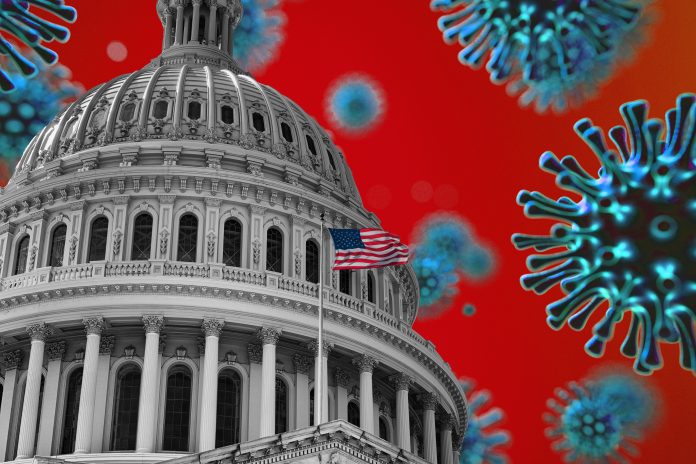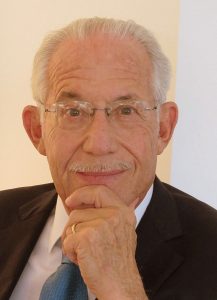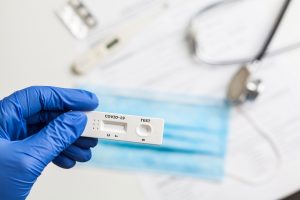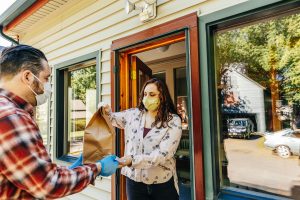

The United States is spiraling. Seven-day averages for positive COVID-19 cases have exceeded 250,000 per day, having risen sharply after the Thanksgiving holiday and rising again after end-of-year celebrations. While many wait on distribution of a vaccine, at press time more than 4,000 Americans are dying on some days—unnecessary and preventable deaths in my view. We could bring this pandemic under control quickly, and well before the vaccines are widely available later this year. The way to do it is something I call COVID Control American Style: a plan to test every U.S. resident using at-home, inexpensive, rapid tests.
The testing dilemma
The U.S. federal government has a responsibility to supply and distribute COVID-19 tests to everyone in the country, so people can know if they’re infected and infectious, and can isolate appropriately. But current testing regimes are insufficient and uncoordinated. Receiving a test in the early months of the pandemic and even today requires sitting in lines for hours and waiting days for results. During that time, an infected person may spread the virus to dozens of others, particularly if they were asymptomatic and unaware of their contagiousness.

The limited supplies and testing waits were centered, for the most part, around PCR testing. This type of testing detects the virus’s genetic material and requires lab analysis. A cheaper and faster alternative is the rapid test. This test would likely be an antigen test, which detects specific proteins on the virus’s surface and can deliver results in as little as 15 minutes. However, another rapid test option is CRISPR, which detects specific DNA sequences. These tests would only be viable if they could be as inexpensive and widely-available as antigen tests.
COVID Control American Style builds on these types of rapid tests. While most rapid tests today are administered at a lab by a healthcare worker, some are optimized for at-home, self-administered use. The FDA granted the first emergency use authorization to an at-home test in mid-November. These tests are the key to controlling the pandemic, but they must be more than just self-administered. They need to be universally accessible and inexpensive.
Cheaper tests and assisted isolation
Ideally, the President would activate the Defense Production Act to produce the at-home tests. The nation’s manufacturing capabilities could make hundreds of millions of tests per week, which could be as small and simple as a pregnancy test. This would create a supply that would guarantee access to all American residents. Additionally, it could drive the price well below $5 per test. Our estimates suggest a cost of 50 cents per test is achievable, as demonstrated by Egypt’s eradication of Hepatitis C with similarly priced, widely available tests.
Assuming tests cost 50 cents each, the cost to administer around 150 million tests per day over 100 days would be about $7.5 billion. For context, the Congressional Budget Office estimated the pandemic’s economic fallout would cost the United States around $8 trillion in the next ten years. That is ‘trillion’ with a ‘t.’ Considering the financial ramifications of doing nothing and letting COVID-19 continue to ravage the country, spending a measly $7.5 billion seems more than reasonable.

Once we’ve identified those that have tested positive, the federal government would help the contagious make it economically and physically possible to remain in isolation for their infection’s duration. Assisted isolation would require social support, including food, medical supplies, and shelter as necessary. This would no doubt be more costly than the tests themselves, but it still pales in comparison to the economic fallout estimates. Assuming around 100,000 households require assisted isolation per day over 100 days, providing those households with a $500 per day payment for two weeks would amount to roughly $70 billion. Meaning the total cost of COVID Control American Style is approximately $77.5 billion. While not inexpensive, this total is remarkably less than the COVID packages that have already been implemented by Congress.
The potential for success
A mass testing pilot program for COVID-19 began in England at the end of 2020 and showed initial promising results, despite some concerns about test accuracy. The government ordered two billion antigen tests and launched an initial testing program in Liverpool. This identified nearly one thousand asymptomatic carriers in the first few weeks, each of whom then isolated themselves. Positive cases in Liverpool declined steeply after the testing was introduced and only began to increase again as the new wave of the virus hit most areas of the country at the end of December. Liverpool’s testing program used healthcare workers to administer the tests. Imagine the widespread use and success that inexpensive at-home testing would entail. The U.K.’s mass testing program provides further evidence for the success COVID Control American Style would bring.
Challenges to consider
There are a few immediate concerns that must be overcome for COVID Control American Style to work. First, rapid tests are less sensitive and have slightly lower specificity than PCR lab testing. Sensitivity is the ability to accurately identify those with the disease, and specificity is the ability to accurately identify those without the disease. For instance, Abbott Laboratory’s rapid antigen test has around 97 to 99% specificity and sensitivity in clinical study. In other words, between one and three of every 100 people may receive a false positive or false negative. Inflating that rate to 300 million people, 3 to 9 million may receive false results, which is problematic. That said, accuracy is improving as the tests become more refined, and CRISPR tests are already nearly as accurate as PCR tests.
The solution to overcome false positives is to retake the test. If someone receives a positive result, test again to be sure as the test is not cost-prohibitive. The rate factors itself, meaning if the 3 to 9 million that receive a false result test again, only 30,000 to 270,000 will receive a false result again. To be more sure, a third test would take those results down lower: 300 to 8,100.
False negatives are a bit trickier. Yes, there will be some. With PCR testing, there are still some false negatives because people may get tested too early to have their virus detectable. There will always be false negatives, but detecting 98% of people infected is far better than current rates. Ten or even twenty percent of those getting PCR tests do so too early and receive a negative result.
The second immediate concern is people not using the tests. With financial aid and inexpensive, convenient tests, it still seems likely that many Americans will not take part in the program. Even as COVID-19 rages throughout the nation, millions traveled for Thanksgiving, and countless people continue to eat out at restaurants, go to bars, and generally ignore COVID-19 guidelines. To counteract this, making the test widely available to schools and workplaces would force many of those who refuse to take them at home to get tested.
Despite these shortcomings, COVID Control American Style could be a powerful tool in the arsenal to strike down COVID-19. This program is not in competition with forthcoming vaccine candidates. The vaccines by Moderna, Pfizer, and others will help to fend off COVID-19, but their long-term effectiveness remains unknown, and they will not be widely available for several months. COVID Control American Style could begin production and distribution of tests immediately, and pairing this program with a federal vaccine distribution program would ideally bring the pandemic to an end even faster.
COVID-19 can be stopped, but not without action. Vaccines are making their way to the public, but it will be months before most can get in line for one. COVID Control American Style uses the tools currently available to control the virus’s spread at relatively little cost rapidly. Ultimately, stopping the pandemic is everyone’s foremost priority. Our plan could bring about that reality sooner rather than later.
William A. Haseltine, Ph.D., is known for his pioneering work on cancer, HIV/AIDS, and genomics. He was a professor at Harvard Medical School, the Harvard School of Public Health and founder of its Division of Biochemical Pharmacology and Division of Human Retrovirology. He has founded twelve biotechnology companies, including Human Genome Sciences, and is the author of several books, including his recently released autobiography My Lifelong Fight Against Disease: From Polio and AIDS to COVID-19.













